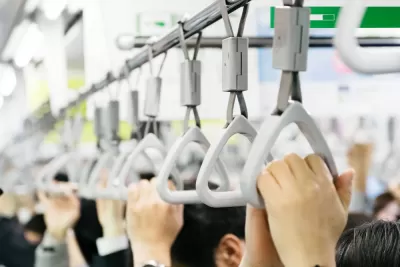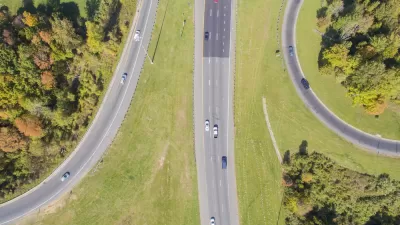It's difficult to definitively link transit use with lower rates of obesity, but it makes intuitive sense. Here's another attempt, using county-level data.

Transit usually requires some walking, but it really doesn't feel like "exercise," just like getting to work. Tom Jacobs writes, "Taking the bus or train usually means walking to your final destination, thus providing an automatic period of pound-shedding daily exercise."
The authors of a new study in Preventative Medicine attempted to isolate that effect. "Using data from the Centers for Disease Control and Prevention, they noted the percentage of each county's residents that are obese, as well as the percentage that take part in 'leisure time physical activity' such as running or various sports."
The study found that on average, "a one percent increase in country population usage of public transit is associated with a 0.2 percent decrease (in the obesity rate)."
FULL STORY: All Aboard! Next Stop, Less Obesity!

Planetizen Federal Action Tracker
A weekly monitor of how Trump’s orders and actions are impacting planners and planning in America.

Chicago’s Ghost Rails
Just beneath the surface of the modern city lie the remnants of its expansive early 20th-century streetcar system.

San Antonio and Austin are Fusing Into one Massive Megaregion
The region spanning the two central Texas cities is growing fast, posing challenges for local infrastructure and water supplies.

Since Zion's Shuttles Went Electric “The Smog is Gone”
Visitors to Zion National Park can enjoy the canyon via the nation’s first fully electric park shuttle system.

Trump Distributing DOT Safety Funds at 1/10 Rate of Biden
Funds for Safe Streets and other transportation safety and equity programs are being held up by administrative reviews and conflicts with the Trump administration’s priorities.

German Cities Subsidize Taxis for Women Amid Wave of Violence
Free or low-cost taxi rides can help women navigate cities more safely, but critics say the programs don't address the root causes of violence against women.
Urban Design for Planners 1: Software Tools
This six-course series explores essential urban design concepts using open source software and equips planners with the tools they need to participate fully in the urban design process.
Planning for Universal Design
Learn the tools for implementing Universal Design in planning regulations.
planning NEXT
Appalachian Highlands Housing Partners
Mpact (founded as Rail~Volution)
City of Camden Redevelopment Agency
City of Astoria
City of Portland
City of Laramie



























